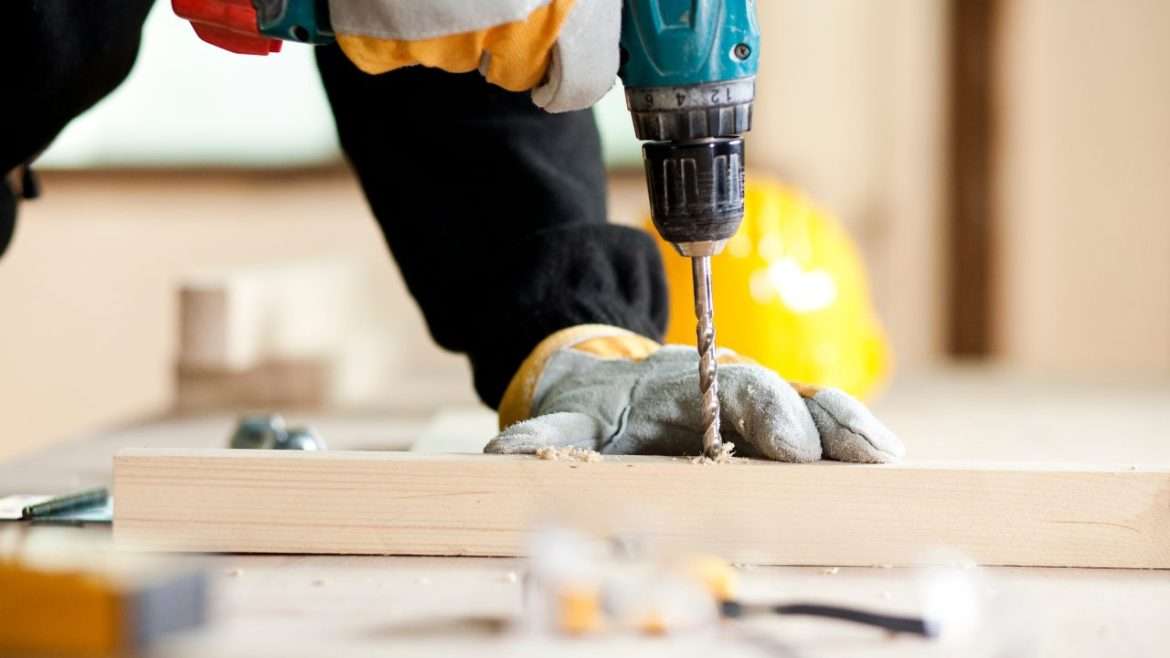Table of Contents
Whether you’re an experienced DIY enthusiast or merely beginning to explore the realm of home improvement, understanding how to use a rotary hammer drill safely and effectively is critical. In this guide, we will embark on a nice journey to discover the ins and outs of this versatile tool, unlocking the secrets to breaking ground effortlessly. From choosing the right drill bit to mastering the art of safe operation, this blog promises to be your go-to resource. So, grab your safety gear, roll up your sleeves, and delve into the exciting realm of rotary hammer drills together! It’s time to turn those DIY dreams into reality.
Understanding the Rotary Hammer Drill
Unlocking the mysteries of the rotary hammer drill is like discovering a new friend in the toolshed. This powerhouse tool stands apart from regular drills with its unique abilities. Think of it as a superhero of drills, ready to tackle tough tasks like breaking through concrete or brick walls. Its hammering and rotating motion make it the go-to tool for heavy-duty projects.
Safety First: Preparing for Drill Operation
Wearing the right gear—safety glasses, gloves, and ear protection—is like wearing a superhero suit. Before igniting the drill power, a thorough check ensures it’s ready for action. Inspecting the cord, grip, and settings ensures a smooth and secure operation. Setting up a safe space is the final touch, clearing the area of obstacles and marking the drilling spots.
Choosing the Right Drill Bit
It’s like choosing the right tool for the right job. Different materials call for different bits, whether a pointy one for wood or a sturdy one for concrete. Attaching the chosen bit securely is like gearing up for battle; it ensures the drill is prepared for the task ahead. The right bit is not just a partner in drilling but a key player in achieving a clean and efficient outcome.
Techniques for Effective Drilling
- Grip and Stance Mastery: Achieving the perfect grip and stance is like finding the rhythm of a dance. Readers, ensure a firm grip on the drill handles and adopt a stable stance. This forms the foundation for precise and controlled drilling.
- Drilling Speed and Pressure: Think of the rotary hammer drill as a conductor and the drill bit as the orchestra. Adjust the speed and pressure to the rhythm of the task at hand. Slow and steady for tough surfaces and a quicker pace for softer ones – it’s a symphony of success.
- Adapting Techniques for Different Surfaces: Just as chefs adjust their cooking style to different ingredients, users must adapt drilling techniques to various surfaces. Whether it’s wood, concrete, or metal, understanding the surface helps achieve optimal results.
Handling Challenging Situations
- Navigating Tight Spaces: In DIY, space is often a luxury. Fear not, readers! When faced with tight corners or confined areas, adjust your approach. Consider using smaller drill bits and maintain a controlled pace for precision.
- Conquering Hard and Uneven Surfaces: Some surfaces may play hard to get, but with the right approach, victory is certain. Consider using specialized drill bits designed for toughness when dealing with hard or uneven surfaces. Apply consistent pressure and let the drill work its magic.
- Troubleshooting Common Issues: Even the pros encounter hiccups. If the drill gets stuck or isn’t performing as expected, pause and assess the situation. Check for overheating, ensure the drill bit is secure, and troubleshoot any issues before continuing. Patience is the key.
Post-Drilling Procedures
- Switching Off Safely: As the drilling finale approaches, ensure a graceful exit. Switch off the rotary hammer drill by releasing the trigger and allowing the motor to wind down. This ensures a safe shutdown, preventing any sudden movements.
- Removing and Storing Drill Bits: Think of drill bits as trusty sidekicks – they need proper care. After drilling triumphs, remove the drill bit securely. Clean any debris, inspect for wear and tear, and store them in a designated place. Happy drill bits mean happy drilling!
- Cleaning and Maintenance Rituals: Every hero needs a good spa day, and so does the rotary hammer drill. After use, clean away dust and debris and store the amazing drill in a cool, dry place. Regular maintenance ensures a longer lifespan and continued stellar performance.
Common Mistakes To Avoid
- Skipping Safety Steps: Safety isn’t an optional accessory; it’s the main event. Skipping safety measures is like embarking on a quest without armour. Readers, never underestimate the importance of PPE and a secure workspace.
- Ignoring Drill Bit Compatibility: Picture this: a square peg in a round hole. Using the absolutely wrong drill bit for the job is a recipe for disaster. Always ensure the selected bit is compatible with the material being drilled.
- Overlooking Drill Speed and Pressure: The drill is a precision instrument, not a wrecking ball. Overlooking the importance of adjusting speed and pressure according to the task can lead to inefficiency or damage to the tool and materials.
Conclusion
Safety and success go hand in hand in wrapping up this rotary hammer drill adventure. Remember, folks, a secure grip, the right bit, and a well-prepared workspace are the superheroes of a safe drilling mission. Whether tackling a DIY project or a professional task, the key is approaching each drill session with caution and confidence. Safely breaking ground is an art, and you are now equipped with the brush strokes. So, break that ground and let the projects flourish! A rotary hammer drill is a mighty tool, and with the newfound knowledge, every person is set to conquer their drilling challenges.
